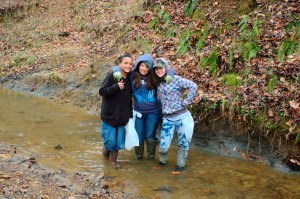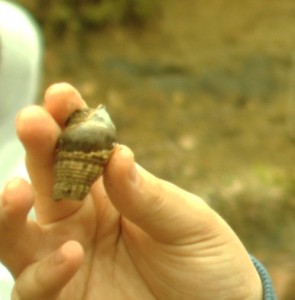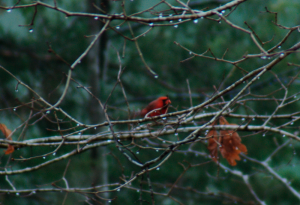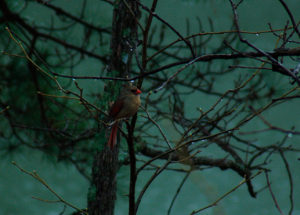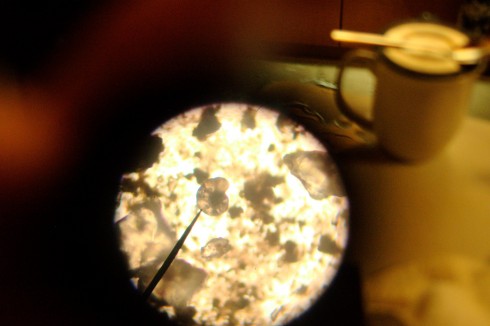
My students will tell you that I’m never happier than when I have my cup of tea. On the night after our visit to Coon Creek, I put a tiny sample, about the size of a matchstick’s head, of sediment matrix on a microscope slide, and added a drop of water to disperse the grains. Then I sat there, while the chaos of dinner-making swirled around me, and searched for tiny, microscopic fossils of creatures that died long ago. With my cup of hot tea beside me, it was like sitting in the eye of a storm, flaming hamburgers be damned, a modicum of sanity in the asylum.

The first thing I noticed though were the quartz grains. They’re very small, silt-sized, but are the largest grains in the sediment. They’re pretty easy to identify because they break like glass, with curved, conchoidal fractures. They’re also pretty little things under the microscope; little, sharp-peaked, transparent mountains.
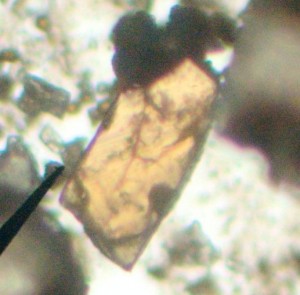
Other minerals are visible in the slides, but they’re dwarfed in size and quantity by the quartz. Yet there is enough of the dark green, glauconite clay to bind the quartz grains together and protect the shells embedded in the sediment from dissolution by the universal solvent, water.
It’s interesting to observe these other minerals, because they take the more classic crystalline shapes and forms. The sharp edges are parallel to one another because of the alignment of the atoms in the mineral crystal.
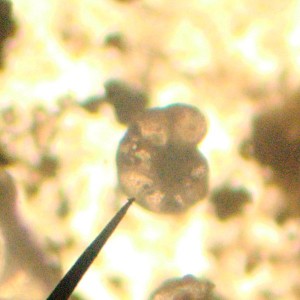
Finding the micro-fossils took a little patience. The entire slide had only four obvious specimens. Since they’re so small that meant a lot of going back and forth under the small field of view of the 100 magnification objective lens. They look like foraminfera to me, but it’s been a while since I’ve encountered them. Foraminfera, or forams for short, are tiny organisms that secrete beautiful calcium carbonate shells. They can be found in, or in the sediments beneath, most of the world’s oceans, particularly in the warmer areas.
Finding forams in the Coon Creek Matrix is a nice little exercise. One of my students, seeing what I was doing, wanted to try it too, so she made her own slide and searched until she found her own specimen. It was somewhat inspiring, so I’ve put together a more detailed post about finding microfossils.
We also found a neat little shell that looks like the overlapping scales on a pine cone. We were disconnected from the internet, so I was only able to look it up when I got back to school.
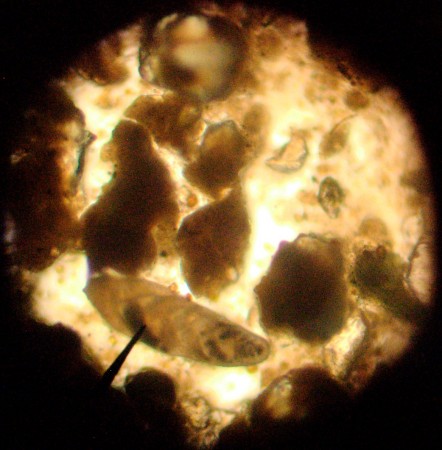
Dr. J Bret Bennington at Hofstra has posted a nice PowerPoint of his introduction to marine microfossils lecture. As a basic introduction, it’s quite comprehensible to middle-school students, or people like myself who did not pay as much attention as they should have during that part of Paleontology. Anyway, based on these notes, the pine-cone-shaped thing is probably a variety of bolivina, a benthic foraminfera. The Foraminifera.eu-Project, is a wonderful, volunteer-produced resource for pictures and identifying forams.
Bolivina are benthic, which means they spend most, if not all of their time in the mud. Planktonic micro-organisms, on the other hand, spend their lives floating around in the water.
Foraminfera have calcium carbonate shells, as do clams and oysters. In the shallow oceans there is a slow rain of them that cover the sea-bed over the millenia. You can end up with thick layers. In fact, the white cliffs of Dover are white because of all the microscopic calcium carbonate shells. In the deeper reaches of the oceans there are much fewer of these shells because they dissolve under high pressure. As a result, down there you tend to find microfossils of diatoms and radiolarians, things with silica shells. Silica is that same material from which glass is made, and is the same material in quartz.
Finding microfossils has actually been quite important for understanding the history of the Earth’s oceans and climate. But that’s another story.






